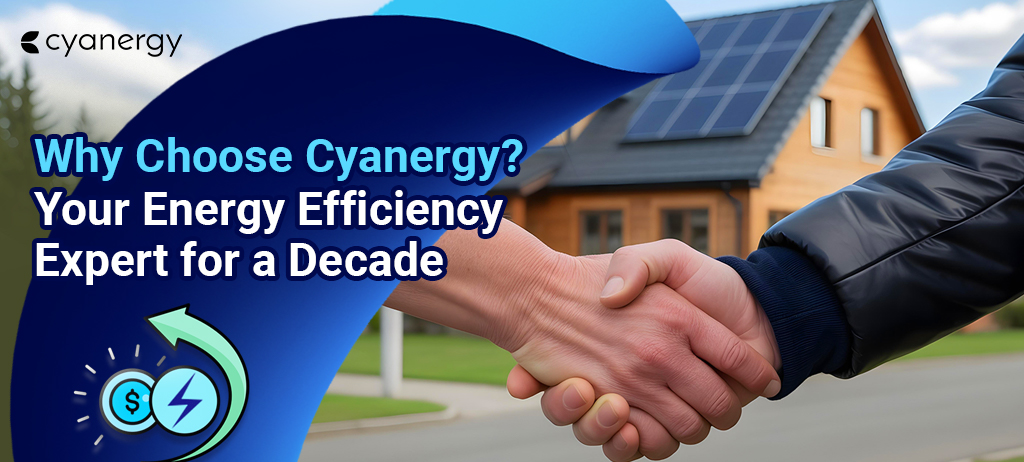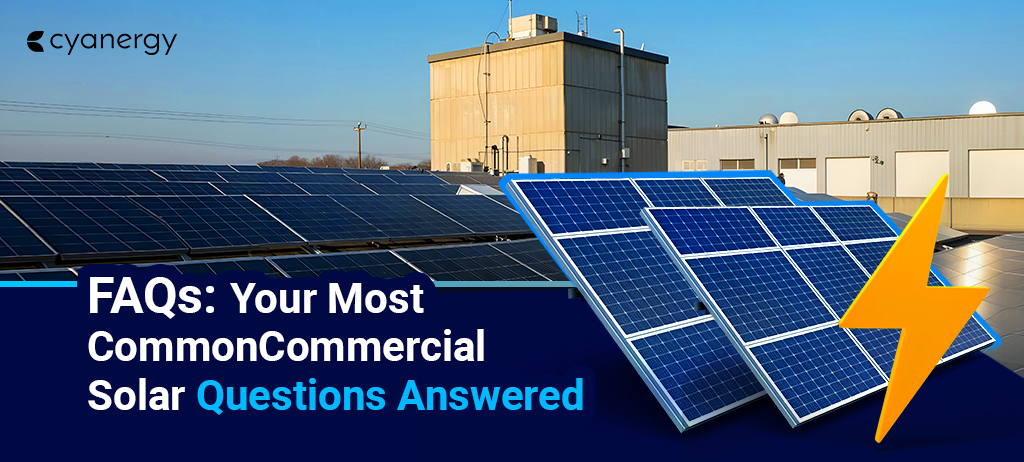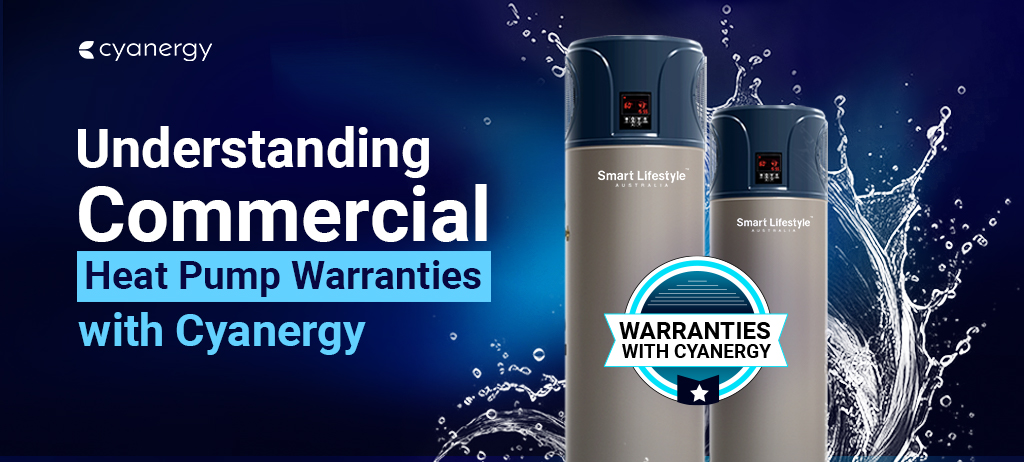When reading about heat pump water heaters, you might encounter the term “Coefficient of Performance” (CoP).
If you’re considering upgrading to a heat pump hot water system, you’re probably looking to save money on your hot water bills. To see how much you could save, CoP can give you a clear idea of the system’s efficiency.
By understanding the CoP of a hot water heat pump, you can better assess the potential savings and find ways to optimize its performance for increased energy efficiency and cost savings.
What is the CoP of a Hot Water Heat Pump?
The hot water heat pump’s Coefficient of Performance (CoP) measures its efficiency. It indicates how much heat energy the pump can produce from its electricity.
For example, a heat pump with a CoP of 3 generates 3 kW of heat energy for every 1 kW of electricity it consumes. SLA R290 heat pumps have a CoP of 5.2, which means you can get at least 5 kW of thermal energy for every 1 kW of consumption or this is like spending $1 on electricity and getting $5.20 worth of heat in return!
Understanding CoP helps you see potential savings. Traditional electric water heaters, common in Victoria, use 1 kW of electricity to produce 1 kW of heat. If you switch to a smart heat pump like SLA’s R290 heat pump with a CoP of 5.2, you’ll save 80% of electricity.
While gas heaters can be more efficient, only the highest-efficiency ones (7-star ratings) can match high-efficiency heat pumps. Also, rising gas prices make even the best gas heaters less economical.
CoP, or Coefficient of Performance, is a way to measure how well a heat pump works. It’s a ratio showing how much heat you get for the energy you put in.
Calculate it by dividing the heat output (kW) by the electrical input (kW). So, a heat pump with a CoP of 3 gives 3 units of heat for every unit of electricity used.
What is CoP and How Does It Impact Energy Efficiency in VIC?
Heat pumps are essential in modern homes. Common types include electric, gas, solar, and air-source heat pump water heaters, known for saving energy. The CoP value explains why air-source heat pumps are energy-efficient.
CoP, or Coefficient of Performance, measures a heat pump’s efficiency. It shows the ratio of the heating capacity to the power input.
A higher COP means better efficiency and energy savings. For instance, an efficient air source heat pump usually has a COP of 3.8 or higher at room temperature.
To find the CoP, you can use the formula: CoP = P1/P2, where P1 is the heating capacity (kW) and P2 is the rated power (kW).
The CoP value can be affected by the external environment and internal components such as the compressor, condenser, evaporator, throttling mechanism, and control system.
Compared to traditional water heaters, air-source heat pump water heaters are more energy-efficient and environmentally friendly.
They use air heat and require only a small amount of electricity to provide hot water continuously. Understanding the CoP value can help you choose the most efficient and suitable product for an air-source heat pump water heater.
How Does CoP Vary with Temperature and Usage Conditions?
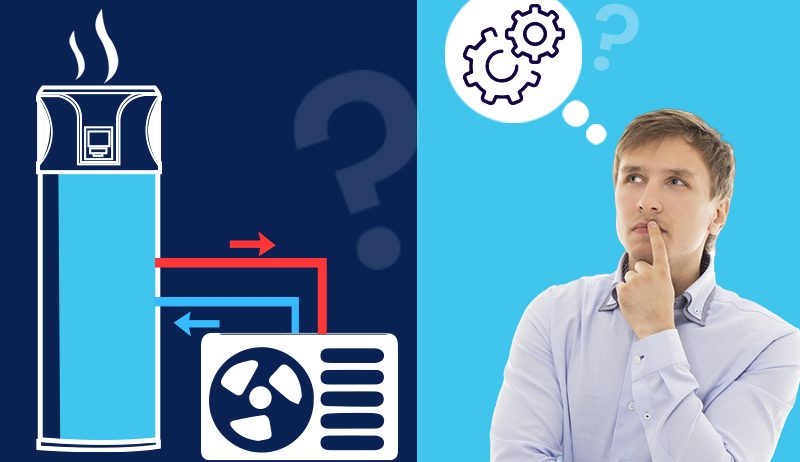
Yes, the CoP can change based on the outside air temperature. Since heat pumps draw heat from the air, they need less electricity when it’s warmer. On cold days, the CoP decreases; on hot days, it increases.
It’s important to find a good average CoP so that the higher energy savings on hot days balance the lower savings on cold days. If you live in a place with consistently low temperatures, choose a heat pump that works well in the cold.
What CoP Should I Look For In My Heat Pump?
For electric water heaters with a CoP of 1:1, a heat pump with a CoP of 2 or higher will lower your hot water bill. The SLA heat pump has a CoP of 5.2; maybe this is what you should look for.
Aim for the highest efficiency you can afford if you plan to stay home long. Once the unit pays for itself through savings, any additional savings are money you can use for other things.
Why CoP Matters for Energy Efficiency and Cost Savings in Hot Water Heat Pumps
CoP, or Coefficient of Performance, is all about efficiency. It measures how effectively a heat pump uses electrical energy to produce heat.
For example, with a simple electric heater like a panel or a fan heater, if you put in 1 kW of electricity, you get 1 kW of heat. This means it has a CoP of 1, meaning there’s no efficiency gain.
However, with a hot water heat pump, the efficiency is much higher. Depending on the system, a heat pump can have a CoP of 3 or even 4. This means that for every 1 kW of electricity you use, you can get 3 to 4 kW of heat.
A hot water heat pump can turn a small amount of electrical energy into a much larger amount of heat energy, making it much more efficient than direct electrical heaters.
This efficiency is why the CoP is important – it helps you get more heating for less electricity, saving you money on energy bills and reducing overall energy consumption.
How Can You Achieve a Good CoP?
Several factors affect the CoP, or Coefficient of Performance, of your heat pump. To start, talk to your heating engineer about whether your home could benefit from extra insulation in the loft or walls and installing double or triple-glazed windows.
Because of modern building standards, newer homes usually have good insulation, but older homes might need extra insulation before installing a heat pump.
After any insulation work, your heating engineer will calculate your home’s heat loss. This involves measuring each room and assessing the building’s doors, windows, roof, insulation, and overall structure.
This calculation helps determine the right size of the heat pump and the heat emitters you’ll need, such as radiators, underfloor heating, or heated skirting boards. Heat pumps work at cooler temperatures than traditional gas boilers, so radiators might not feel as hot.
It’s important to size the heat pump correctly. Unlike gas boilers, which can be too big or too small without major issues, a heat pump must be the right size to work efficiently.
The CoP depends on the system’s efficiency, so the system needs to be designed and installed correctly for your specific property.
How to Ensure Efficient Hot Water Constantly?
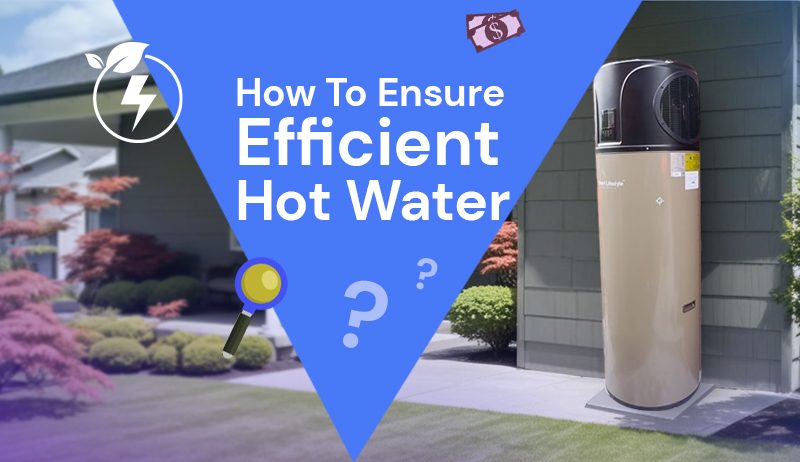
A hot water heat pump is also very important. A demand for hot water may make the heat pump run at a higher temperature, but that can be mitigated by selecting the correct cylinder.
The SLA heat pump helps to achieve the best possible CoP. It is also compatible with solar PV, which heats the water, making the system even more energy efficient. It has three perfect modes for different situations, ensuring constant hot water availability.
ECO (Heat Pump Only) Mode
The standard mode where the highest efficiency is achieved
Hybrid Mode
The Heat Pump & E-heater operate together to achieve the set temperature.
E-Heater
When the air temperature drops below -7 °C, the heat pump automatically selects E-heater mode for an electric hot water boost.
What are R290 Heat Pumps?
R290 gas boasts high thermodynamic efficiency, making it a superior choice for hot water heat pumps. Its environmentally friendly composition reduces greenhouse gas emissions, creating a cleaner planet.
Moreover, R290’s non-toxic and non-corrosive characteristics enhance safety during operation and maintenance.
Why Choose Smart Lifestyle Australia’s R290 Heat pumps?
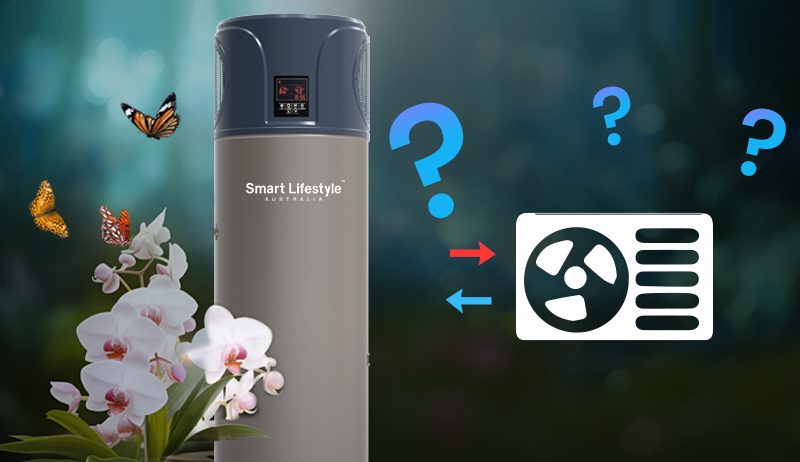
An energy-efficient hot water system, such as the Smart Lifestyle Australia heat pump, is a great way for households to substantially reduce their energy consumption and cost of living.
A heat pump quickly and easily replaces your old, energy-hungry electric water heater. It also reduces CO2 emissions by over 4 tonnes, saving you up to $900* annually.
SLA heat pumps use ingenious technology to transfer thermal energy directly from the surrounding air into water. Thus, they do not rely on direct sunlight or fossil fuels as an energy source.
Smart Lifestyle Australia’s heat pump has a remarkable CoP of 5.2! From 1kW of power input, it can create over 5kW of output heat, which is a remarkable 500% performance efficiency.
